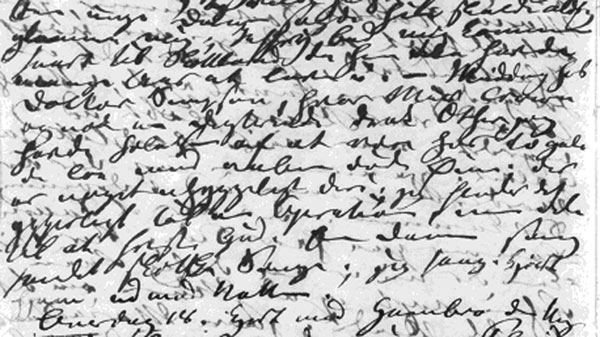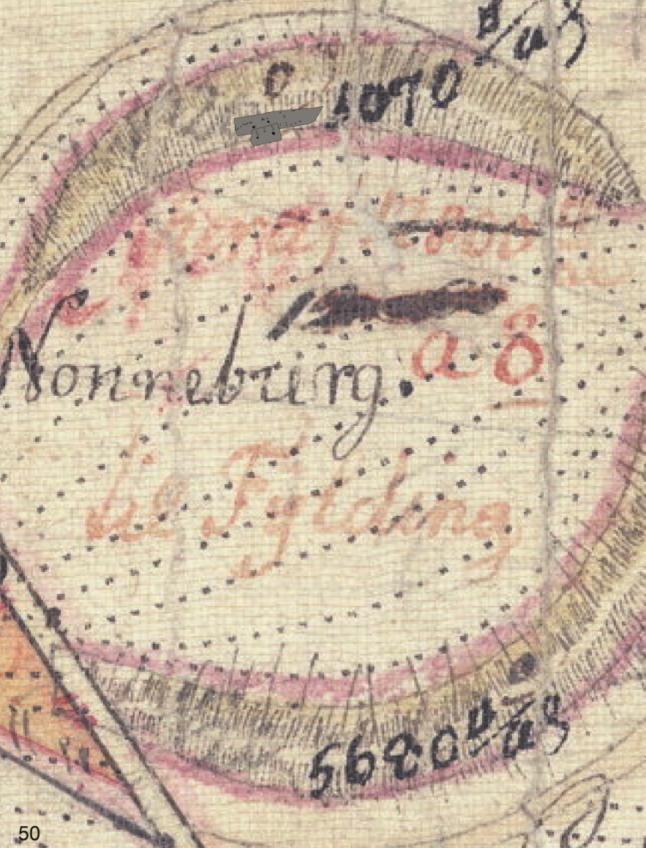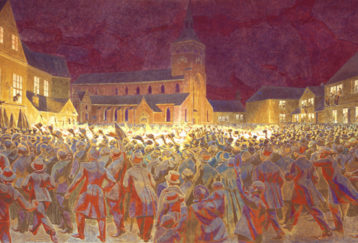
During the latter part of 1847 James Y. Simpson experimented with ether and other agents on himself and on guests at his home at 52 Queen Street, Edinburgh. These sessions were generally held after dinner and are known to have been attended by Dr. Matthews Duncan, Dr. George Keith and other medical colleagues. Nevertheless, not all of the guests who either observed or participated in the postprandial inhalation of ether were professional acquaintances. Simpson was host to many distinguished visitors from home and abroad and on the evening of 17 August 1847 the company included two eminent literary figures, Hans Christian Andersen (1805-1875) from Denmark and the Victorian authoress Catherine Crowe (1800-1876).
Hans Andersen’s passion for travel took him throughout Europe where he came into contact with the musical, literary and social giants of his time but his first visit to England at the invitation of William Jerdan[1], editor of the Literary Gazette, came at what he himself regarded as the pinnacle of his career[2]. Following a stay of nine days in Holland, during which he had been banqueted and otherwise acclaimed by literary admirers and press in Amsterdam, The Hague, Leiden and Rotterdam, he boarded a vessel at Rotterdam for the crossing to England.
Of subsequent events in London, probably the most impressive for Andersen was the first meeting with Charles Dickens, arranged by William Jerdan. The Danish born trader and banker Joseph Hambro arranged accommodation in his son’s home in Kilburn and assisted Andersen in the financial deliberations with his English publisher Richard Bentley. It was also the 78-years-old Hambro who ultimately engineered Andersen’s visit to Scotland, not that a great deal of persuasion was required: Andersen accepted willingly the opportunity of visiting the Scotland of Sir Walter Scott for whose writings he repeatedly expressed admiration. It so happens that Joseph Hambro’s son, Carl Joachim, founder of the bank CJ. Hambro and Sons in London[3], was temporarily in Scotland where his wife was receiving medical treatment from James Y. Simpson.
Joseph Hambro accompanied Andersen to Edinburgh by train and, after an overnight stop at York, they arrived at their destination on August 10. The somewhat hectic fortnight which followed included introductions to prominent Scottish writers and aristocrats, receptions and dinners, a tour of Edinburgh conducted by James Simpson in person[4], and a visit to the southern highlands.
The dinner arranged by Simpson in honour of his Danish guest took place at the professor’s home, 52 Queen Street, on 17 August 1847. One of the invitations to that particular evening has been published previously[5], that to Simpson’s friend and colleague at the Royal Maternity Hospital, John Moir with the following text:
My Dear Sir,
Hans Christian Andersen, the celebrated Danish poet and writer, is here for a few days. He is to dine with me on Tuesday first at six o’clock. I would feel exceedingly happy if you could come and meet him. You will find him a most loveable being and a true child of nature. He is here on a visit to a patient of mine and has been lionizing in London for the last six weeks.
Yours very truly,
J.Y. Simpson
52 Queen Street, Sat. Morning.
Andersen recorded the event in his diary[6]:
“Middag hos Doctor Simpson, hvor Mis Crowe og nok en Digterinde drak Æther, jeg havde Følelsen af at være hos to gale[,] de loe med aabne døde Øine; der er noget uhyggeligt deri; jeg finder det ypperligt til en Operation, men ikke til at friste Gud.”

An English translation of the above entry, provided by the curator of the Odense Museums, reads:
“Dinner at Dr. Simpson’s, where Miss Crowe and one other poetess drank ether; I had the feeling of being with two mad creatures – they smiled with open dead eyes; there is something ghastly about it; I find it admirable for operations, but not for tempting God.”
A slightly more detailed description of the event appeared in Andersen’s The Fairy Tale of My Life, a version in English of his main autobiography Mit Livs Eventyr4 published in 1855.
”… We met at the home of Dr. Simpson and in the large circle which was gathered there several experiments were made with breathing in ether. I thought it distasteful, especially to see ladies in this dreamy intoxication; they laughed with open lifeless eyes; there was something unpleasant about it, and I said so, recognizing at the same time that it was a wonderful and blessed invention to use in painful operations, but not to play with; it was wrong to do it; it was almost like tempting God; a worthy old gentleman took my part and said the same; by asserting what I did, I seemed to have won his heart.”
However thrilled he may have been to dine with “the famous Dr. Simpson”4, the tall lean guest from Denmark seems to have been ill-prepared for what he was about to witness. The countenance of the etherized young ladies engendered a feeling of revulsion which Andersen did not fail to convey to the other guests. Although the son of an atheist, he himself was deeply religious and repugnance at what he witnessed at Simpson’s home and the reference to =tempting God” may have to be seen in that light.
Catherine Crowe’s writings, betraying her obsession with the supernatural, were widely read around the middle of the nineteenth century. She was also interested in Spiritualism and her best-known book, The Night-Side of Nature (1848), not only contains a great deal of information on that subject but endeavours to uncover a scientific explanation for the occult. Not surprisingly, therefore, James Y. Simpson found in this particular guest a willing participant in his after-dinner experiments. Hans Andersen and she had met her the previous evening at a reception given in Andersen’s honour by Carl Joachim Hambro. On that occasion they sat next to each other at dinner and Mrs. Crowe presented him with a copy of her horror novel Susan Hopley: the Adventures of a Maidservant (1841) also known under the title Circumstantial Evidence. The two had a great deal to discuss: although best remembered for her preoccupation with the occult, Catherine Crowe was also authoress of a number of childrens’ books.
Despite the meeting with one of the greatest literary figures of the time and the experience of inhaling ether, no reference to Simpson or allusion to the evening of 17 August 1847 is known in Catherine Crowe’s writings or correspondence. The task of cataloguing the large collection of her works and letters at the Templeman Library is currently in progress and may yet reveal her personal account of that evening.
Mr. Bruno Svindborg, research librarian at the Royal Library in Copenhagen, arranged for the provision of the photograph of the entry in H C Andersen’s diary, and Mr. Ejnar Askgaard, curator to the Odense City Museums, kindly provided me with a translation of the same into English.


